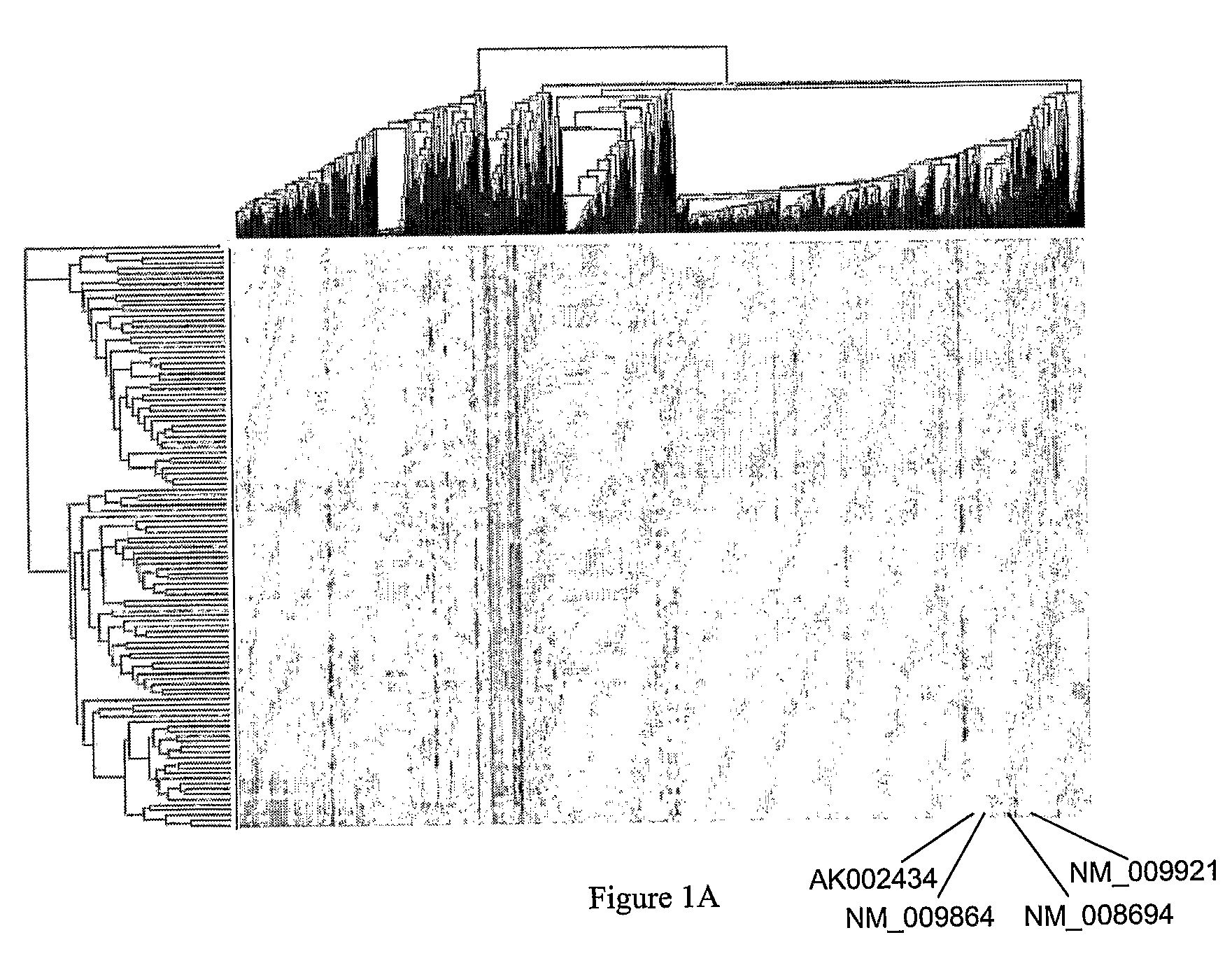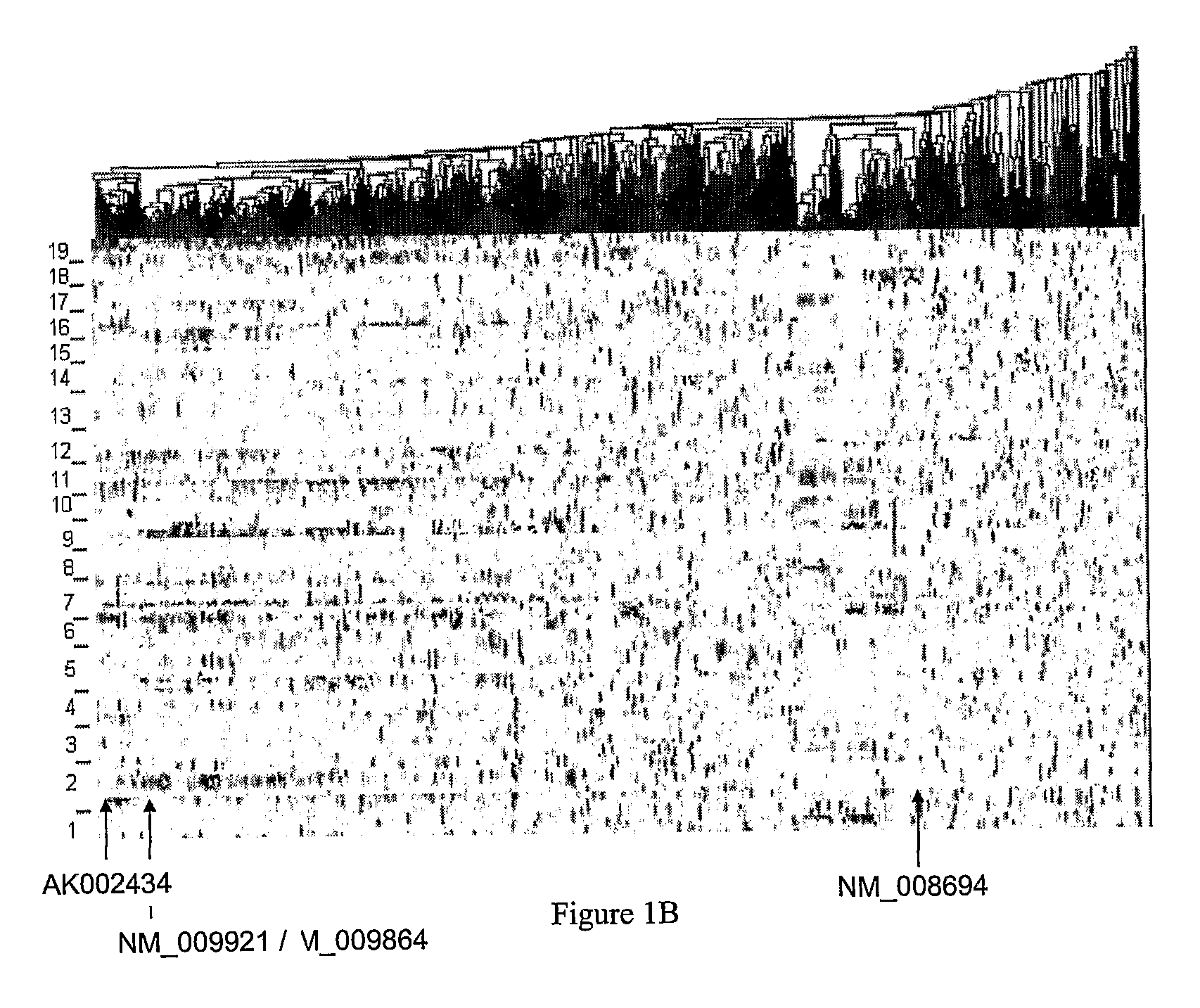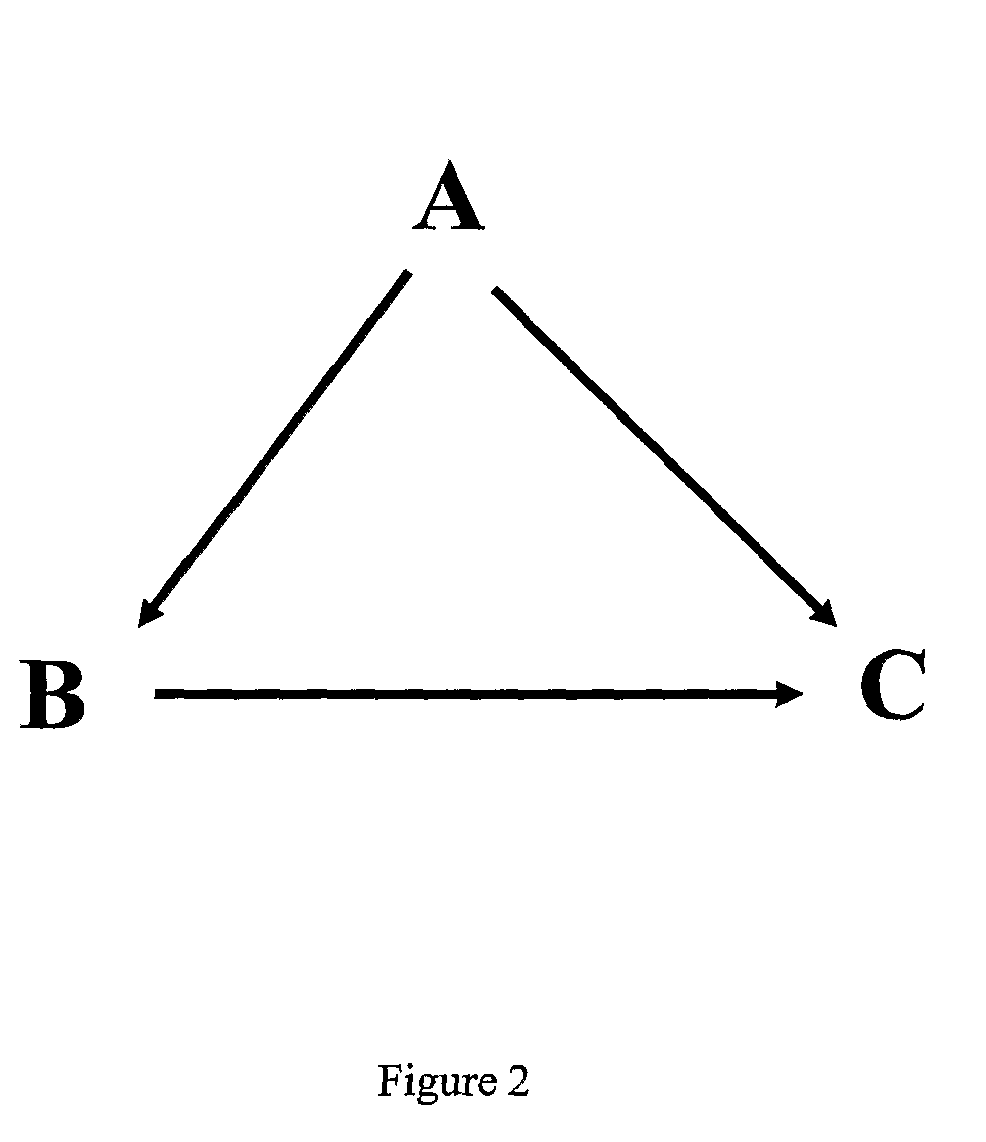Systems and methods for reconstructing gene networks in segregating populations
a gene network and population technology, applied in the field of segregating population gene network reconstruction methods, can solve the problems of limiting the utility of the network, requiring extensive data and other, and reducing the reliability of the causal relationship inferred from time series data, and achieve the effect of predicting the capacity of the network
- Summary
- Abstract
- Description
- Claims
- Application Information
AI Technical Summary
Benefits of technology
Problems solved by technology
Method used
Image
Examples
examples
Experimental Design and Data Collection
[0202]The F2 mouse population and gene expression data used in this study have been previously described by Drake et al., 2001, Physiol Genomics 5: 205-15; and Schadt et al., 2003, Nature 422: 297-302, each of which is hereby incorporated by reference in its entirety. Briefly, an F2 population consisting of 111 mice was constructed from two inbred strains of mice, C57BL / 6J and DBA / 2J. Only female mice were maintained in this population. All mice were housed under conditions meeting the guidelines of the Association for Accreditation of Laboratory Animal Care. Mice were on a rodent chow diet up to twelve months of age, and then switched to an atherogenic high-fat, high-cholesterol diet for another four months. At sixteen months of age the mice were phenotyped and their livers extracted for gene expression profiling. The mice were genotyped at 139 microsatellite markers uniformly distributed over the mouse genome to allow for the genetic mapping ...
PUM
 Login to View More
Login to View More Abstract
Description
Claims
Application Information
 Login to View More
Login to View More - R&D
- Intellectual Property
- Life Sciences
- Materials
- Tech Scout
- Unparalleled Data Quality
- Higher Quality Content
- 60% Fewer Hallucinations
Browse by: Latest US Patents, China's latest patents, Technical Efficacy Thesaurus, Application Domain, Technology Topic, Popular Technical Reports.
© 2025 PatSnap. All rights reserved.Legal|Privacy policy|Modern Slavery Act Transparency Statement|Sitemap|About US| Contact US: help@patsnap.com



